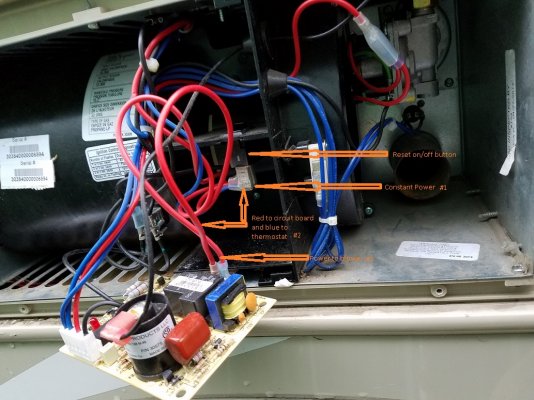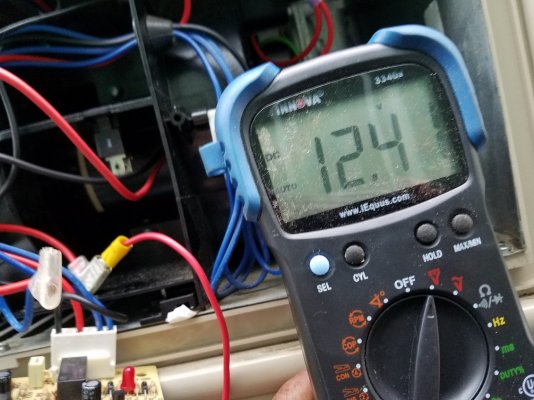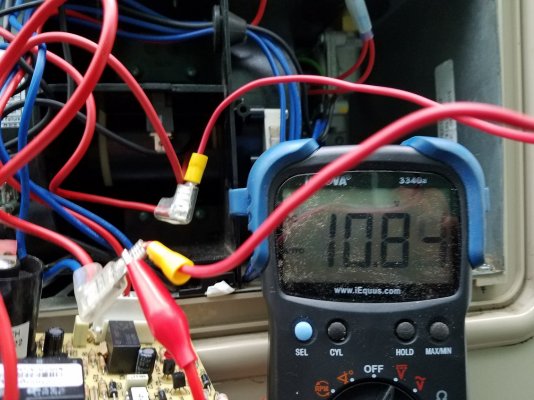Hi:
I have this ongoing problem with our RV furnace which I posted once months ago when the furnace stranded us in Yellowstone when it was below freezing. I have read any thread that I could have found here or online including the very good one in the library section of this forum, but I am not sure what would be the next step to figure out the problem.
The problem is the common issue of fan coming on and the furnace tries to kick in but it doesn't stays on. This problem has gone away twice when the weather was warmer! but now that we are below 30F again, the problem is back. The unit (the RV) is 2016 Atwood. What I have found is: My house batteries (two of them connected to each other) read at 12.35V. When I check the power at the fan, it reads 10.6V which I believe (please correct me if I am wrong) is enough to run the fan but not enough to push the sail switch to open the circuit. So, I have checked all the connections that I could see and I know of and I have found no rust or loose connections. Still, I took them off, clean them and put them back together. Still 10.5-10.6 at the fan. Then I moved to the reset switch on the unit. I found that the power at the reset switch is 10.6 but when I remove the connection from the circuit board to the switch I read 12.1 at the switch! This is where I need help. What does this mean? I thought maybe the batteries may be bad and they don't hold the charge under the load but when I tested them, while I was reading 10.6 at the fan, the batteries were at 12.1.
Does this mean the switch is bad? Does it mean there is excess resistant through the board? Or something else? Is there a sail switch that open up at lower voltage?
Thanks for the help and happy holidays.
I have this ongoing problem with our RV furnace which I posted once months ago when the furnace stranded us in Yellowstone when it was below freezing. I have read any thread that I could have found here or online including the very good one in the library section of this forum, but I am not sure what would be the next step to figure out the problem.
The problem is the common issue of fan coming on and the furnace tries to kick in but it doesn't stays on. This problem has gone away twice when the weather was warmer! but now that we are below 30F again, the problem is back. The unit (the RV) is 2016 Atwood. What I have found is: My house batteries (two of them connected to each other) read at 12.35V. When I check the power at the fan, it reads 10.6V which I believe (please correct me if I am wrong) is enough to run the fan but not enough to push the sail switch to open the circuit. So, I have checked all the connections that I could see and I know of and I have found no rust or loose connections. Still, I took them off, clean them and put them back together. Still 10.5-10.6 at the fan. Then I moved to the reset switch on the unit. I found that the power at the reset switch is 10.6 but when I remove the connection from the circuit board to the switch I read 12.1 at the switch! This is where I need help. What does this mean? I thought maybe the batteries may be bad and they don't hold the charge under the load but when I tested them, while I was reading 10.6 at the fan, the batteries were at 12.1.
Does this mean the switch is bad? Does it mean there is excess resistant through the board? Or something else? Is there a sail switch that open up at lower voltage?
Thanks for the help and happy holidays.



